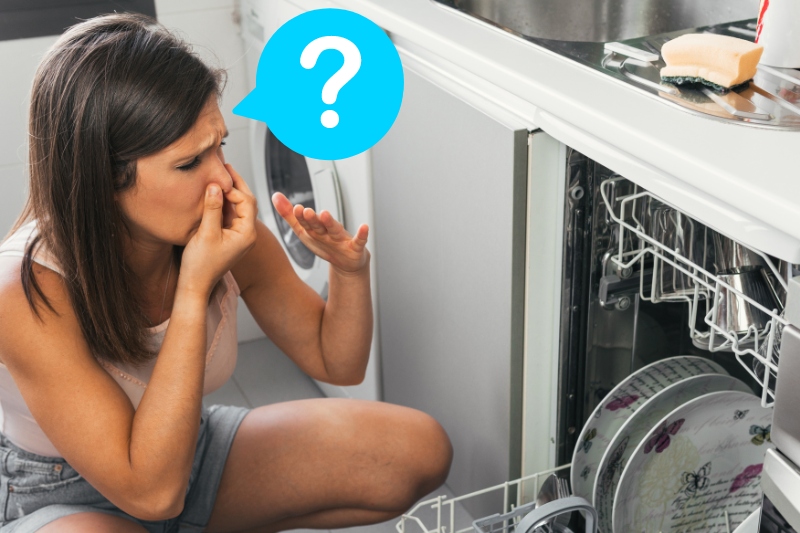Everyone loves eating, but cleaning up after a nice meal is never fun. Dishwashers make this experience much more bearable as they significantly speed up the cleaning process. Simply chuck the dishes in the dishwasher and leave them to clean while you sit back and relax.
Considering that many households rely on their dishwasher to keep their dishes clean, it can be worrying when you notice that your dishwasher smells bad. Why would you trust an appliance to clean your dishes if it doesn’t seem to be clean itself?
Fortunately, there are ways to remove foul odours from your dishwasher so they can be used again. Read on for a detailed rundown of the different causes and solutions to this common problem.
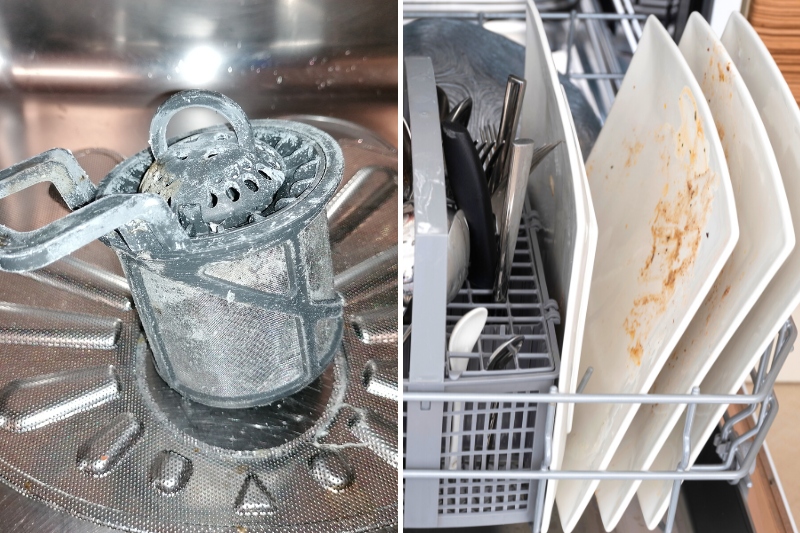
What Can Make a Dishwasher Smell Bad?
No one wants to deal with a smelly dishwasher. Not only is it unhygienic for cleaning your dishes, but the smell can also spread around and make your home smell unpleasant.
Unfortunately, it is fairly common for dishwashers to develop foul odours when they are not maintained correctly. This is typically due to one of the following issues:
Cause 1: Dirty drain filter
A dirty drain filter is the most common cause of nasty dishwasher odours. Whenever you use your dishwasher, food particles from your dirty dishes will become trapped in the filter to prevent them from going down the drain.
Without regular cleaning, these particles will build up, therefore causing a bad smell.
Cause 2: Clogged drain
Another possibility is that the drain leading from your dishwasher has become clogged. This clog will collect food particles and bacteria, leading to a bad smell.
This issue can eventually lead to leakage, so it must be dealt with immediately. Thankfully, in newer models, an alarm will sound if this occurs.
Cause 3: Trapped food particles
As your dishwasher is used, layers of soap scum will build up on the inside. Food particles can also become caught in this layer of scum, causing bacteria to grow and a foul odour to develop.
Cause 4: Mould and mildew growth
Moisture and humidity are two main things mould and mildew need to grow and thrive. Unfortunately, a dishwasher provides both of these conditions, making it a perfect breeding ground. One of the most common areas for this growth to occur is in the gasket seal.
Cause 5: Plastic near the heating element
This last potential cause is easily identifiable, as the smell in your dishwasher will be that of burning plastic.
It occurs when any plastic (e.g., that from Tupperware or a water bottle) comes into contact with the heating element at the base of the dishwasher and starts to melt.
How Do You Get Rid of Bad Smells in the Dishwasher?
Below is a step-by-step guide for removing all kinds of foul smells from your dishwasher.
This process will target all the above issues apart from burning plastic. If you’re dealing with burning plastic, the best way to rectify the problem is to turn off your dishwasher, wait for it to cool down, and remove the plastic item from the heating element.
In rare cases, your dishwasher drain may be too severely clogged for this cleaning process to work.
If your dishwasher still smells terrible after following our guidelines, this issue will need to be dealt with by a professional.
Step 1: Clean the filter
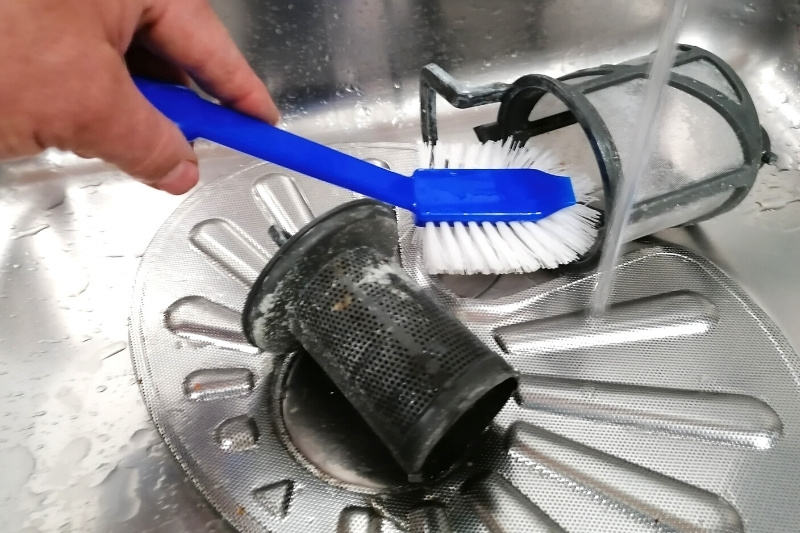
Your dishwasher’s filter will be located at the base of the appliance, either under the spray arms or in one of the back corners.
Although some dishwashers come with self-cleaning filters (in which case you can skip this step entirely), many still require you to clean the filter manually.
To do so, you will first have to remove the filter from the drain. Instructions on removing the filter from your dishwasher will vary from model to model.
However, in the majority of cases, you will need to twist the filter in the direction indicated to be able to pull it out.
Once removed, empty the filter of as much debris as possible before soaking it in a bowl of warm soapy water.
After a few minutes, gently scrub any remaining food particles on the filter until it is spotless.
Allow your filter to air dry before returning it to its slot in the dishwasher. At this time, we highly recommend wiping any food particles from the drain to help prevent future build-up.
Step 2: Unclog and wipe down the interior
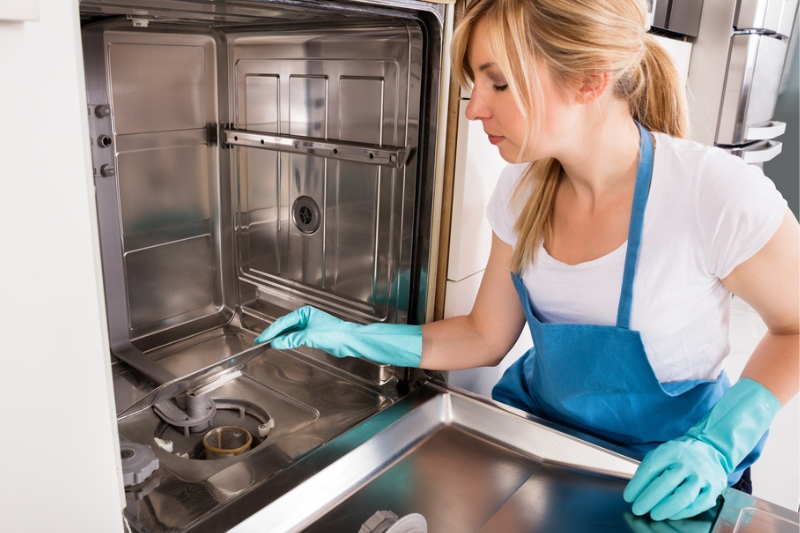
Once the filter has been cleaned, it’s time to move on to the rest of your dishwasher’s interior.
Although the majority of food particles will have been found in the filter, there will still be residue on the walls and spray arms of the dishwasher that also needs to be removed.
Begin by removing the spray arms from your dishwasher. To do this, you simply need to rotate the arm counter-clockwise and lift it out of the dishwasher.
Using a toothpick or fine brush, you will then need to remove any food particles that have become lodged in the tiny holes along the spray arm.
Once completed, wipe down the walls and racks of the dishwasher using a cloth and some warm soapy water. Remove as much grime and soap build-up as possible before replacing the spray arms.
Step 3: Clean the gasket seal
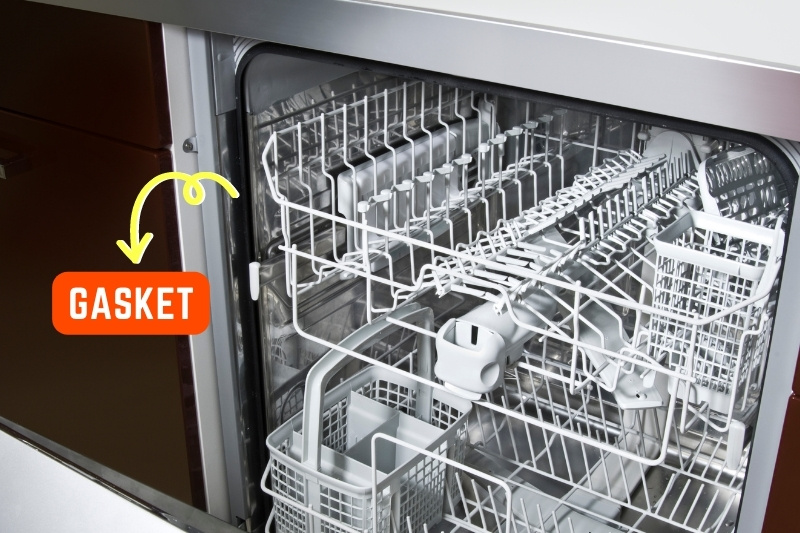
Like the inside of the dishwasher, the gasket seal can be wiped down with a solution of warm soapy water.
Remove as much mould and mildew build-up as possible at this stage. It may require a bit of elbow grease, depending on how bad the build-up is. Once done, wipe the seal dry with a clean cloth.
As stated earlier, the gasket seal is one of the most common places to find mould and mildew within your dishwasher. As such, give it special attention before moving on to the next step.
Step 4: Run cycles with white vinegar and bicarbonate of soda
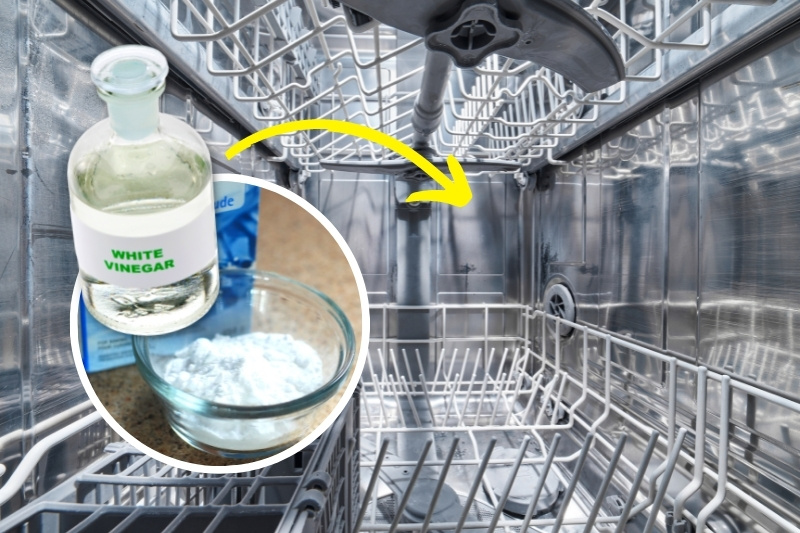
Now that you’ve cleaned your dishwasher as much as possible by hand, it’s time for your dishwasher to do the rest itself.
This is done by running two separate wash cycles, one with white vinegar and the other with bicarbonate of soda.
During the first wash cycle, place a bowl filled with 500 ml of white vinegar on the top rack of your dishwasher. Once the cycle is complete, sprinkle the base of your dishwasher with 250 g of bicarbonate of soda and run a second cycle.
The acidity of the vinegar, followed by the abrasiveness of the bicarbonate, will effectively eliminate any remaining odours from your appliance.
Although there are many times when these cleaners should be used together, it is best to use these ingredients separately to clean your dishwasher the most effectively.
Step 5: Let it air dry
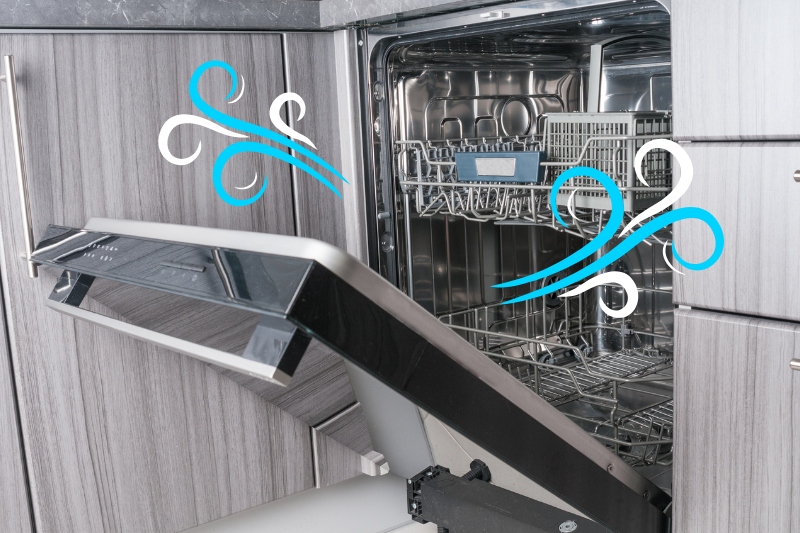
By this point, your dishwasher will smell fresh and look sparkling clean. All you need to do now is leave it to dry so that mould doesn’t start to build up again.
All dishwashers have a seal around the door that effectively traps water inside the machine so that it doesn’t leak when in use. Unfortunately, this also means residual water can become trapped inside, preventing the dishwasher from properly drying.
To combat this, make sure to leave your dishwasher open overnight. If needed, you can also wipe over the inside and gasket seal with a dry cloth or towel to speed up the drying process.
Top Tips for Avoiding Future Dishwasher Odours
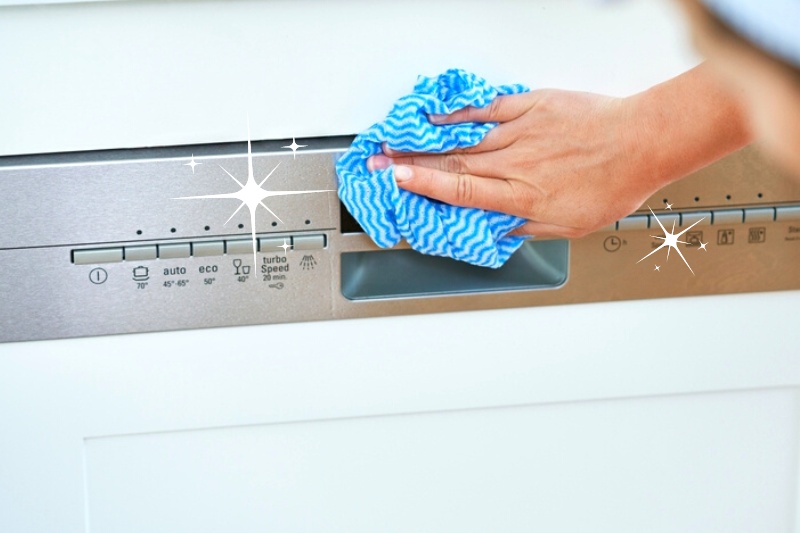
A smelly dishwasher is a much more common issue than you may think. Fortunately, there are a number of things you can do now that your dishwasher is clean to prevent any foul odours from developing in the future:
- Scrape off any leftover food remnants from your dishes before loading them into the dishwasher. This prevents food particles from clogging the filter and clinging to the other surfaces inside your machine.
- Make a point of properly cleaning out the filter at least once a month (unless it is self-cleaning). This removes any blockages before they become severe.
- Load your dishwasher according to the manual instructions and avoid overloading. Putting too much in your appliance at once causes debris to accumulate at a rapid rate.
- Don’t use other hot water appliances (such as the shower or washing machine) while the dishwasher is running so that the cycle can run as hot as possible.
- Deep clean your dishwasher once every one to three months, depending on how frequently it is used.

Hannah has a passion for cleaning. She worked her way around Australia by cleaning hostels in exchange for free accommodation and used her cleaning skills to bag a job as a chalet host for a luxury ski company in France.
